The medieval collection at the Walters is one of the richest in the country, thanks to Henry Walters. He bought medieval art when it was only beginning to be appreciated, and he also took an early interest in Byzantine art when there were few other collectors in the area. So we have a lot to work with in this area. The term medieval covers a lot of territory and a long period of time, over 1000 years. And Byzantium lasted even longer, right up until the 15th Century. Martina discussed the difficulty of having only the objects to tell the stories in museums. But luckily we have a lot of objects.
Early Christianity = Late Antiquity
Gardner's calls the early middle ages "Late Antiquity" and has a separate chapter for "Byzantium." During the 3d and 4th C. CE, the Roman Empire still covered a lot of territory, but the Romans were increasingly rejecting polytheism in favor of monotheism. Jewish and Christian patrons were commissioning works of art with religious subject matter from artists whose work was Roman in style and technique. What survives is funerary art and paintings and sculptures, including sarcophagi found in catacombs. The beginning of the Middle Ages is traditionally associated with the Christianization of the Roman Empire in the 4th Century.
Martina stressed that although we can now look back and see where things were headed, people living at the time had no idea. It's fascinating to think that the people living in the early medieval period thought of themselves as very modern. They had rejected paganism and embraced Christ. The long eras of antiquity were in the rear view mirror. Still, there is no moment in time when the ancient world ended, or even when the Roman empire ended. The sack of Rome in 414 was not defining to those living through it, and the division of the Roman empire into East and West and the establishment of the Eastern capital at Constantinople was "just a move." We now know that Roman culture was on the decline, and the waning of Roman power in the West allowed local rulers to take on more authority. Boundaries, dynasties and political boundaries were constantly shifting.
Martina stressed that although we can now look back and see where things were headed, people living at the time had no idea. It's fascinating to think that the people living in the early medieval period thought of themselves as very modern. They had rejected paganism and embraced Christ. The long eras of antiquity were in the rear view mirror. Still, there is no moment in time when the ancient world ended, or even when the Roman empire ended. The sack of Rome in 414 was not defining to those living through it, and the division of the Roman empire into East and West and the establishment of the Eastern capital at Constantinople was "just a move." We now know that Roman culture was on the decline, and the waning of Roman power in the West allowed local rulers to take on more authority. Boundaries, dynasties and political boundaries were constantly shifting.
The first stop on Martina's tour at the Walters was the gorgeous "Rubens vase," so called because Rubens owned it for a time and sketched it in detail. In fact, this beautiful vase carved in high relief from a single piece of agate was probably made in Constantinople in about 400 AD in an imperial workshop for a Byzantine emperor. The vase was carried to France by crusaders who sacked Constantinople in the Fourth Crusade. Its history can be traced through the hands of various collectors except for a short period of time when it was lost after a shipwreck, but it resurfaced intact. Very few hard stone vases have survived, so this is a rare and exquisite treasure.
At the top of the political and social structure in Constantinople in late Antiquity was the emperor, who took on a kind of cult status and was considered to be God's representative on earth and therefore important even in Christian rituals. Gifts from the emperor took on extraordinary importance. This section of a belt from the late 4th C. is composed of an imperial medallion (Emperor Constantius II) and a coin set in elaborate gold frames and mounted on a gold chain. The recipient of such a medallion would have set it this way to wear it to advertise his privileged social status. The belt's tassels visually echo the tassels of Constantius's wreath. Powerful people wanted to be associated with power, and the Roman power structure was still functioning in Constantinople.
This appropriation of a pagan concept or theme was not limited to the Good Shepherd. Early Christians saw similarities between the promises and themes of pagan gods and those of Christianity. For examples, Herakles might be represented as Samson, and Dionysian images represented rebirth and resurrection.
The classical trend is also evident in objects decorated with secular themes, such as the two objects below. The pyxis on the right is carved from ivory and is decorated with two episodes from Greek mythology. First, the Olympian gods are seen feasting around a tripod table and holding the golden Apple of the Hesperides. In the next scene, Hermes is awarding the apple to Aphrodite, whom he chose over Athena and Hera (shown to her sides) as the most beautiful among goddesses. The mythological scene is recognizable. During this time, however, mythological scenes become less recognizable as artists and patrons attempted to subvert the literary traditions of Antiquity. The jewelry box on the left does not have a clear subject matter. Dancing women are mixed with possible mythological scenes. The carvings are done using 2 different techniques, and the box shows some signs of being made in an early "assembly line." Both of these objects are from around the 4th to 6th centuries and were found in Egypt.
Other ways to distance the "modern" art from pagan idolatry were to use unreal surroundings and adopt a non-naturalistic aesthetic with wafter-thin frontal figures.
Even the earliest Christian communities recognized that some people had a special relationship with God, and they were venerated for their faith. Martyrs who suffered for their faith were the first Christian saints. At first, the cult of the martyrs was local, usually tied to shrines raised over the saints' burial places. Pilgrims would come to pray at burial sites, and would then fill small flasks with oil or water stored at or near the sites. This pilgrim flask of Saint Menas, found in Egypt, is adorned with an image of the saint in a soldier's tunic with his arms raised in prayer, flanked by kneeling camels. The metal flask depicts Saint Sergios on horseback. The cult of this 3rd-century saint reached its height of popularity in the 6th century, at the site of his martyrdom in Sergiopolis (in northern Syria).
Byzantium
In 395 the Roman Empire was divided east from west, and the East was ruled from Constantinople. The division was solidified in 410, when Rome was sacked and the Western capital moved east (to Milan and then to Ravenna). Things in the West were falling apart (see "Migration Art") but the East was surviving and even thriving as a Roman empire. The Eastern Empire continued as a cultural and political entity for nearly 1000 years, an era and empire we now call Byzantine.
Byzantine art had 3 "golden ages:" early, from Justinian in 527 to the onset of iconoclasm in 726, middle, from the renunciation of iconoclasm in 843 to the Crusaders' occupation of Constantinople in 1204, and later, from the recapture of Constantinople in 1261 to the final loss in 1453 to the Ottoman Turks.
Although we would never use these items on a school tour, Martina pointed out the Kaper Koraon silver from the first "golden age" of Byzantine art. The celebration of the Mass was the most important ritual celebrated by Christians, and the Walters owns one of the only four surviviving silver altar services from the first "golden age." Each piece of Byzantine silver was donated by a private donor, often from his or her own private dinner service, to gain divine blessing, in fulfillment of a vow, or in prayer for salvation. Most of the pieces contain inscriptions listing the names of the donors and some indicate that they were donated to the church of St. Sergios in Kaper Koraon, the Greek form of the name of the town in Syria where they were located. The silver service was probably hidden in the 8th C. when parts of Syria were abandoned by Byzantine Christians fleeing Arab conquests.
The Kaper Koraon service at the Walters has been arranged to reflect a typical Byzantine altar of the 6th century. It's a really beautiful installation.
After discussing these items and some jewelry from the relatively affluent Byzantine culture, Martina moved to discuss some later religious items. Over the course of the middle ages, the Virgin Mary came to be known as the primary intercessor, the most effective in communicating between mortals and the divine. Her image was ubiquitous in the visual arts throughout the medieval period. This is one of the earliest examples of what would become known in the Byzantine world as the Eleousa, or the Virgin of Tenderness. It was found in Egypt and was probably made in the 7th or 8th century. It was carved in ivory, which would become a popular medium for depictions of the Virgin. Here, Mary cradles her son tenderly, but the standing figures of angels remind the viewer that the human child is also fully divine.
Ivory was also used for devotional plaques in the Byzantine empire, and the Walters has several. We stopped first at the Hodegetria, a portrait type modeled on a famous icon supposedly painted by the Evangelist Luke himself. This ivory carved copy is from about the 10th century. Martina stressed how important it was to the artist to produce an exact copy, because only that image was considered the authoritative version. The word hodegetria is Greek for "she who shows the way," and in this type of image Mary is always shown pointing to her son.
Martina's discussion of this plaque led to a discussion of icons. By this time we were in the central room of the set of rooms at the Walters devoted to the Middle Ages. This room includes icons from the Byzantine world, Russia, and Ethiopia, so it spans several cultures and ages. The artistic roots are apparently similar, however. Icons were important as a focus for devotion in all those cultures.
From about the 6th century, icons (small portable paintings of Jesus, Mary and Child and/or saints) were very popular in Eastern worship. The small works depicted the subjects as timeless, motionless images, often with a gold background to evoke an "eternal motionless world of religious truth." Such icons were intended only to evoke the presence of holy figures addressed in prayer, and practitioners took care to distinguish such veneration from "worship." Still, many others rejected the practice of venerating icons as "idol worship."
The 6th and 7th centuries were catastrophic years for the Eastern Roman (Byzantine empire). The Sasanians swept into the eastern provinces, Arabs under the banner of Islam attacked the empire and two-thirds of the territory of the empire was lost. Emperor Leo III became convinced that God was punishing the empire for the idolatrous worship of icons and a period of iconoclasm began. For art historians, it represents something of a "blackout" because so much religious art was lost and destroyed. (Note: iconoclasm forced Byzantine artists westward, where "doubtless they found employment in the courts of Germanic kings" and strongly influenced the development of Western European art. )
Restoration of images began in 843, and the period of Middle Byzantine art began. Beautiful church decorations and mosaics abounded. In smaller objects, such as we have at the Walters, carved ivories returned and were produced in large quantities.
Painted icons returned to prominence and began to be displayed by clergy on a screen to separate the clergy from the laity in churches. Later this screen developed into a wall of icons known as the "iconostasis."
The Walters has a collection of tiles, broken [perhaps destroyed by the Ottoman Turks?] and painstakingly reconstructed [in 1961; I would like to get more about this story] and displayed as an "iconostasis."
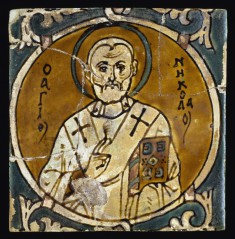
The gallery which contains these objects also contains a wonderful Russian icon from a later period of Byzantine art depiciting the Hospitality of Abraham. Although this painting is from about 1600, the roots in Byzantine art are clear. Plus, this is an excellent work to use with touring groups; the docent can discuss line and color, relative sizes of the figures, the backgrounds, the story [if appropriate]. Apparently, in the Eastern Orthodox church culture, the Old Testament story of three angels visiting Abraham prefigures the New Testament concept of the Holy Trinity.
Also in this gallery are Ethiopian icons which have similar artistic roots. The wide watchful eyes are powerful in Ethiopian icons, and the robes are colorful and full of details.
Martina suggested that we compare this image from late 17th century Ethiopia with the earlier iconic image of the Virgin from Egypt. Interesting.
Martina will be back with us next week to continue our discussion of Medieval Art.
* * * * * * * * * * * * * * * * * * * * * * * * * * * * * * * * * * * * * * *
John joined us after lunch to discuss how to actually use these rooms on a tour. The challenge, of course, is to use the art without talking about religion. He gave us an interesting history of the Rubens vase, including the shipwreck, and pointed us to a few pieces that Martina did not discuss that he has found to be good for tour stops. For example, he directed us to the lovely "Faiyum portraits" from Roman Egypt. They fit within the description of late Antiquity but were not really religious. These types of portraits were painted from life when a person was young and presumably healthy, and then kept. At death, they were used to cover the face of mummified remains when the Romans adopted Egyptian burial practices. Note the powerful eyes (again).
Earrings similar to the ones worn by the woman in the portrait are displayed in the case below. They were probably made in Constantinople in about 600, possible as an imperial gift. They were found in Spain. The Visigoths, a migratory group that eventually settled in Spain, had by the 6th century established trade and diplomatic ties with the Byzantine empire, whose jewelry they much admired.
More on the Visigoths next week when we start with "Migration Art."
**************************
Post-script: The AP Art History guidelines emphasize that Medieval Art had several influences which changed over time: early influences include Roman and migratory practices, while later art is also influenced by the rise of Islam, and Islamic art, in turn, was influenced by Asian art. Note that the periodic rejection of figural imagery on theological grounds are common to all major religions.
** The Roman Empire had split apart as Rome faced foes on its frontiers. A system of shared rule was created by Diocletian in 293 but it was unstable. Constantine was declared Augustus by his troops in 306. This act plunged the Roman Empire into civil war. Constantine prevailed, and was sole ruler. He decided to base himself in Byzantium. The founding of Constantinople was an attempt to usher in a new era of one empire with one emperor.
Constantine exhibited a "nuanced" understanding of religion. After succeeding to august position, he declared the sun god Apollo to be his divine protector, but he was not absolutely loyal to the old gods. The great persecution of Christians began in 303, but after Constantine secured power, he treated Christians more favorably, granting them freedom to worship in 313. Maybe this was because his new city needed inhabitants. Pagans were a majority in Constantinople, but Constantine encouraged Christians to settle there as well. Christianity and the cult of the sun shared similar traits. Both used the "light of the world" as a central redemptive symbol, and the Greek idea of logos, the divine word or holy wisdom, was woven into the fabric of the new city. Constantine's public works used pagan imagery, but he incorporated Christian influences into his private mausoleum. His son built the first church dedicated to logos, which was eventually rebuilt as the Hagia Sophia ("holy wisdom").
Constantinople flourished as the old Rome declined, becoming a faded relic too weak to defend itself from attacks by Germanic forces in the 5th c. When the Western Empire fell in 476 Rome's imperial era ended, and Constantinople became not just the other Rome but the entire empire.
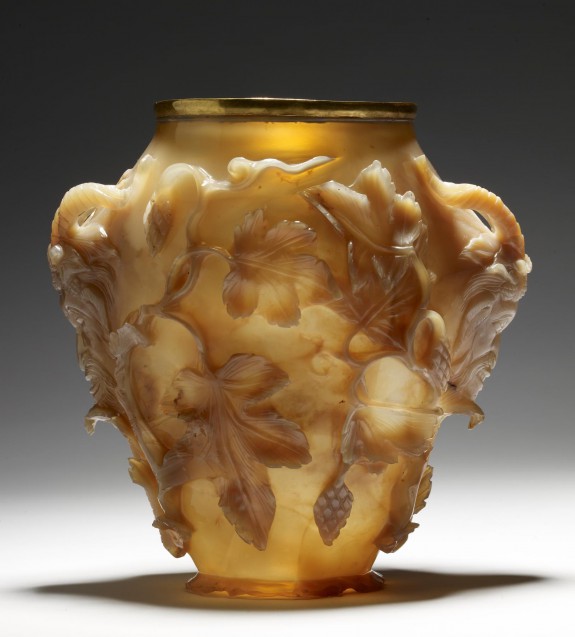





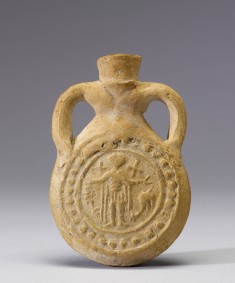



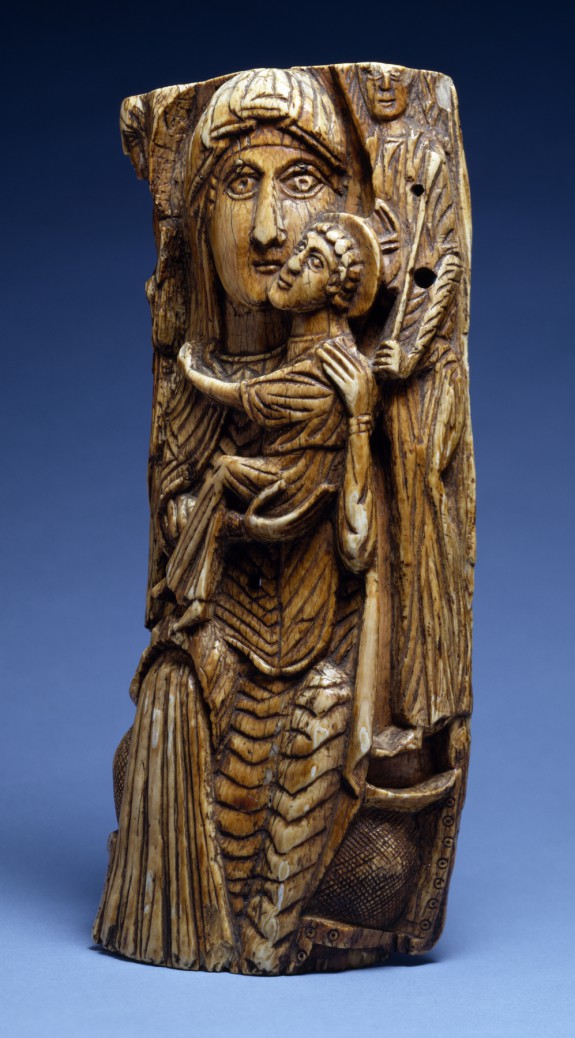



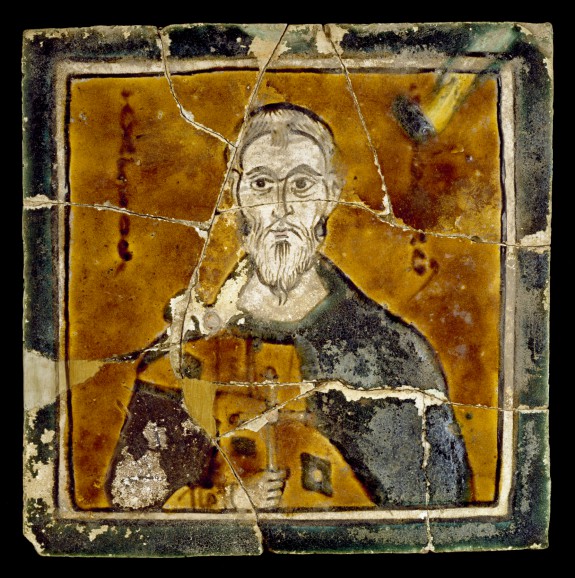







No comments:
Post a Comment